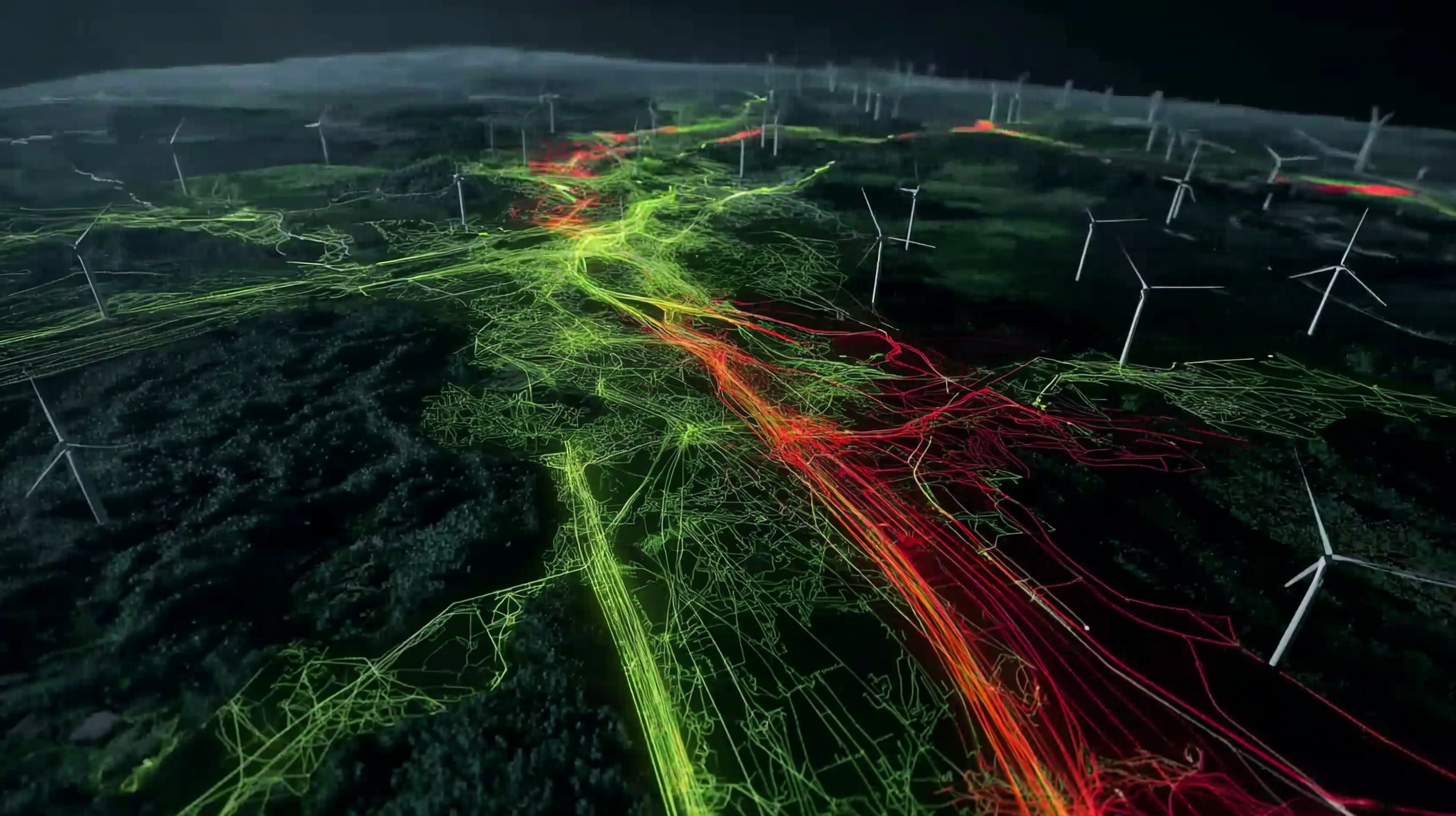 As the world faces escalating environmental challenges and the pressing need for sustainable development, the optimization of
Energy Systems has emerged as a critical focus for both policymakers and
industry leaders. The transition towards a sustainable future heavily relies on how efficiently we can harness and manage our
energy resources. This article delves into ten essential tips
designed to enhance the performance of Energy Systems, paving the way for innovative solutions that reduce emissions and promote
the use of renewable resources. From integrating advanced technologies to fostering community engagement in energy conservation,
these strategies aim to not only improve the efficiency of our current systems but also create a
resilient infrastructure that supports economic growth and
environmental responsibility. By implementing these tips, we can collectively contribute to a greener planet
and ensure that Energy Systems play a pivotal role in the sustainability narrative of the 21st century.
As the world faces escalating environmental challenges and the pressing need for sustainable development, the optimization of
Energy Systems has emerged as a critical focus for both policymakers and
industry leaders. The transition towards a sustainable future heavily relies on how efficiently we can harness and manage our
energy resources. This article delves into ten essential tips
designed to enhance the performance of Energy Systems, paving the way for innovative solutions that reduce emissions and promote
the use of renewable resources. From integrating advanced technologies to fostering community engagement in energy conservation,
these strategies aim to not only improve the efficiency of our current systems but also create a
resilient infrastructure that supports economic growth and
environmental responsibility. By implementing these tips, we can collectively contribute to a greener planet
and ensure that Energy Systems play a pivotal role in the sustainability narrative of the 21st century.
In today’s rapidly changing world, understanding the importance of energy system optimization for sustainability is crucial. Optimizing energy systems not only reduces waste and improves efficiency, but it also contributes significantly to environmental conservation. By enhancing the way we produce, distribute, and consume energy, we pave the way for achieving a more sustainable future. It is imperative to consider innovative strategies that minimize carbon footprints and leverage renewable resources effectively.
One essential tip for optimizing energy systems is to invest in smart grid technology. This advancement enables better monitoring and management of energy consumption, facilitating real-time adjustments that lead to reduced waste and increased reliability. Another tip is to encourage energy-efficient practices in buildings and industries. Implementing energy management systems can lead to significant savings while simultaneously benefiting the environment by lowering greenhouse gas emissions.
Furthermore, promoting the use of renewable energy sources is vital. Transitioning to solar, wind, and other sustainable sources not only reduces dependence on fossil fuels but also promotes local economies. When energy systems are aligned with sustainability goals, communities can thrive, and a greener, more sustainable future can become a reality.
The integration of renewable energy sources is more crucial than ever in achieving a sustainable future. With the anticipated growth of perovskite solar cells, projected to surge from $473.2 million in 2024 to $15.4996 billion by 2031, the focus on optimizing energy systems becomes clear. This escalating market reflects a significant shift towards renewable solutions, driven by technological advancements and the need for cleaner energy alternatives.
Furthermore, innovative practices such as the intelligent mining systems in the Maowusu Desert, which enhance single-well production by 40% while reducing coal consumption by 15%, illustrate the potential of integrating AI into energy systems. Additionally, coal-fired power plants along the Yangtze River are employing combustion optimization strategies that result in annual carbon dioxide reductions exceeding one million tons. Such initiatives not only bolster renewable energy integration but also contribute to the overall reduction of greenhouse gas emissions, showcasing the vital role of technology in this transition.

 In the pursuit of a sustainable future, leveraging smart technologies is paramount for efficient energy management. Smart grids, for instance, utilize real-time data analytics to optimize electricity distribution and minimize energy loss. These interconnected systems enable utilities to respond swiftly to fluctuations in demand, ensuring a stable and reliable power supply. Additionally, the integration of renewable energy sources into smart grids is facilitated through advanced forecasting and monitoring tools, which enhance the grid's capacity to adapt to varying energy inputs.
In the pursuit of a sustainable future, leveraging smart technologies is paramount for efficient energy management. Smart grids, for instance, utilize real-time data analytics to optimize electricity distribution and minimize energy loss. These interconnected systems enable utilities to respond swiftly to fluctuations in demand, ensuring a stable and reliable power supply. Additionally, the integration of renewable energy sources into smart grids is facilitated through advanced forecasting and monitoring tools, which enhance the grid's capacity to adapt to varying energy inputs.
Moreover, energy management systems (EMS) play a crucial role in optimizing energy consumption across both residential and commercial sectors. By employing Internet of Things (IoT) devices, households and businesses can track their energy usage patterns, identify inefficiencies, and adjust their consumption accordingly. These technologies not only promote energy conservation but also empower users to participate actively in demand-response programs, contributing to grid stability. As smart technologies continue to evolve, they will significantly enhance our ability to manage energy systems sustainably, paving the way for a resilient and eco-friendly future.
As the demand for sustainable energy systems grows, the role of energy storage solutions has become increasingly vital. According to the International Energy Agency (IEA), energy storage can provide significant benefits to power grids, allowing for enhanced reliability and greater integration of renewable energy sources. By 2040, the global energy storage market is expected to reach approximately 1,000 gigawatts (GW), as staggering advancements in battery technology, particularly lithium-ion systems, facilitate the transition towards a low-carbon future.
Energy storage solutions not only balance supply and demand but also mitigate the intermittency associated with renewable energy sources such as solar and wind. For instance, a report by Wood Mackenzie states that the cost of battery storage has dropped by nearly 89% since 2010, making it a more feasible option for businesses and homeowners alike. This drastic reduction in costs, coupled with increased efficiency, means energy storage systems can store excess energy produced during peak production hours and discharge it during periods of high demand, ultimately fostering a more resilient and sustainable energy infrastructure.
The promotion of policy frameworks that support energy optimization initiatives is crucial for advancing sustainable energy systems. Governments can play a pivotal role by implementing regulations that incentivize energy efficiency and the integration of renewable energy sources. For example, tax credits for both businesses and homeowners who invest in energy-efficient technologies can significantly reduce overall consumption. Additionally, establishing mandatory energy performance standards for appliances and industrial processes can lead to substantial energy savings and lower greenhouse gas emissions.
Moreover, public-private partnerships can be instrumental in fostering innovation in energy optimization. By collaborating with private companies, governments can support research and development of cutting-edge technologies, such as smart grid solutions and energy storage systems. These collaborations not only enhance energy efficiency but also create jobs and stimulate economic growth. Importantly, comprehensive policies must also address the social dimensions of energy optimization, ensuring that all communities, especially those that are vulnerable, have access to clean and sustainable energy solutions. Through these efforts, a robust policy framework can pave the way for a more sustainable energy future.





